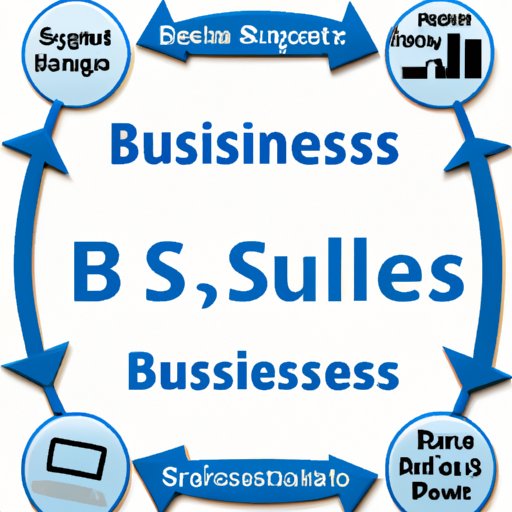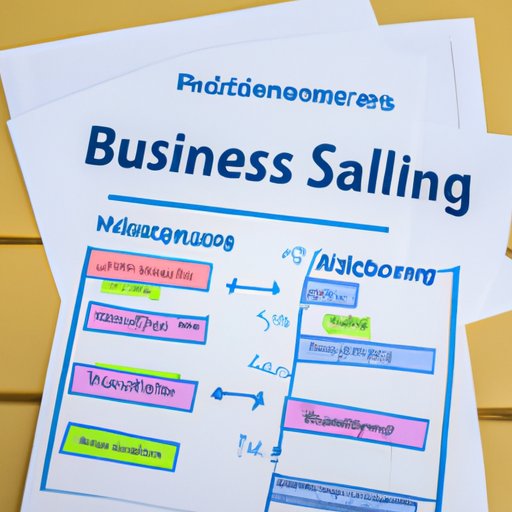Introduction
Business to business (B2B) sales is an essential component of many companies’ operations. It involves selling products or services to other businesses rather than individual consumers. B2B sales is a complex process that requires specialized knowledge and understanding of the market, customers, and competition. In this article, we explore the basics of B2B sales, strategies for success, and the dynamics of B2B transactions.

Overview of Business to Business Sales
Business to business sales refers to the process of selling goods or services to other businesses. Companies engage in B2B sales for a variety of reasons, including expanding their customer base, increasing revenue, and gaining market share. B2B sales involve a different set of considerations than traditional consumer sales. For instance, buyers in B2B transactions tend to be more informed and demand higher quality products and services.
B2B sales can involve a wide variety of products and services, ranging from industrial equipment and components to office supplies and software. Companies may also offer specialized services such as consulting, training, and maintenance. Regardless of the product or service being sold, the key to successful B2B sales lies in understanding the market, customers, and competition.
How to Leverage Business to Business Sales Strategies
Successful B2B sales involve a variety of strategies and tactics. These include understanding the market and customers, crafting an effective sales pitch, building relationships with clients, and utilizing technology and automation.
Understanding the Market and Customers
Before engaging in any kind of B2B sales activity, it is important to understand the market and customers. This includes researching potential customers, learning about their needs and preferences, and identifying potential opportunities. Companies should also identify their competitors and analyze their marketing strategies. By understanding the market and customers, companies can create targeted sales strategies that are tailored to the specific needs of their target audience.
Crafting an Effective Sales Pitch
Once companies have identified potential customers, they need to develop an effective sales pitch. This includes creating persuasive presentations, brochures, and other materials that explain the features and benefits of their products or services. Companies should also focus on building relationships with customers by providing helpful information and offering personalized solutions.
Building Relationships with Clients
Relationship-building is a critical component of successful B2B sales. Companies should strive to establish trust and credibility with their customers by providing high-quality products and services, responding quickly to inquiries, and addressing customer concerns. Companies should also focus on developing long-term relationships with customers by offering incentives and rewards for repeat purchases.
Utilizing Technology and Automation
Technology and automation can help companies streamline their B2B sales processes. Companies can use automated systems to track customer data, manage leads, and generate reports. Automation can also help companies save time by automating routine tasks such as invoicing, order processing, and customer service.

The Benefits and Challenges of Business to Business Selling
Business to business sales can offer several advantages to companies. B2B sales can generate higher profits due to larger orders and longer-term contracts. Companies can also benefit from increased visibility, brand recognition, and access to new markets. However, there are also some challenges associated with B2B sales, such as dealing with large, complex organizations and negotiating contracts.
Benefits of Business to Business Selling
Business to business sales offer several advantages to companies, including:
- Higher profits due to larger orders and longer-term contracts
- Increased visibility, brand recognition, and access to new markets
- Ability to form strategic partnerships and alliances with other businesses
- Access to valuable customer feedback and insights
Challenges of Business to Business Selling
Despite the many benefits of B2B sales, there are also some challenges associated with this type of selling. These include:
- Dealing with large, complex organizations that require lengthy negotiations
- Maintaining customer relationships over the long-term
- Keeping up with changing customer demands and expectations
- Navigating the competitive landscape and staying ahead of the competition
Understanding the Dynamics of Business to Business Transactions
Successful B2B sales require an understanding of the dynamics of B2B transactions. This includes identifying the buyer and seller, establishing terms and conditions, and negotiating price and delivery.
Identifying the Buyer and Seller
The first step in any B2B transaction is to identify the buyer and seller. This includes verifying the identity of both parties and ensuring that they have the legal authority to enter into a contract. The buyer and seller should also agree on the scope of the transaction, including the type of goods or services being exchanged and any applicable warranties or guarantees.
Establishing Terms and Conditions
Once the buyer and seller have been identified, they should establish terms and conditions for the transaction. This includes outlining payment terms, delivery schedules, and any additional services that may be required. It is important to ensure that both parties understand and agree to all terms and conditions before proceeding with the transaction.
Negotiating Price and Delivery
Price and delivery are two of the most important aspects of any B2B transaction. Companies should negotiate the best possible price and delivery terms for their products or services. Negotiations should take into account the cost of production, overhead expenses, shipping costs, and any applicable taxes or fees.

Developing a Winning Business to Business Sales Plan
Successful B2B sales require a well-thought-out plan. Companies should define their objectives and goals, analyze the competition, design an action plan, and implement the plan. Companies should also monitor their progress and adjust their strategies as needed.
Defining Objectives and Goals
The first step in developing a successful B2B sales plan is to define clear objectives and goals. Companies should identify their target customers, set realistic sales targets, and determine how they will measure success. Companies should also consider how they will use technology and automation to streamline their processes.
Analyzing the Competition
Companies should also analyze the competition in order to gain a better understanding of the market. This includes researching competing products and services, analyzing pricing strategies, and tracking customer feedback and reviews. Companies should also identify areas where they can differentiate themselves from the competition.
Designing an Action Plan
Once companies have defined their objectives and analyzed the competition, they should design an action plan. This includes creating sales and marketing strategies, setting timelines and milestones, and assigning tasks to team members. Companies should also consider ways to optimize their processes, such as using technology and automation.
Implementing the Plan
The final step in the process is to implement the plan. This includes executing the strategies outlined in the action plan, tracking progress, and making adjustments as needed. Companies should also review their performance regularly to ensure they are meeting their objectives and goals.
Conclusion
Business to business sales is a complex process that requires specialized knowledge and understanding of the market, customers, and competition. Companies need to leverage strategies such as understanding the market and customers, crafting an effective sales pitch, building relationships with clients, and utilizing technology and automation. Additionally, companies should develop a winning B2B sales plan by defining objectives and goals, analyzing the competition, designing an action plan, and implementing the plan. With the right strategies and a well-thought-out plan, companies can achieve success in the world of B2B sales.
(Note: Is this article not meeting your expectations? Do you have knowledge or insights to share? Unlock new opportunities and expand your reach by joining our authors team. Click Registration to join us and share your expertise with our readers.)
